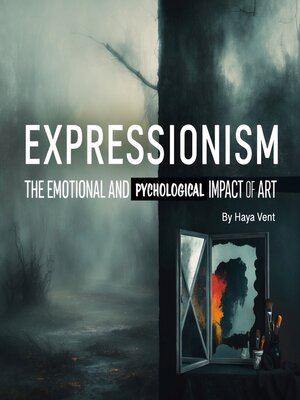
Sign up to save your library
With an OverDrive account, you can save your favorite libraries for at-a-glance information about availability. Find out more about OverDrive accounts.
Find this title in Libby, the library reading app by OverDrive.



Search for a digital library with this title
Title found at these libraries:
| Library Name | Distance |
|---|---|
| Loading... |
Expressionism is a powerful and transformative movement in art that emphasizes the expression of emotional and psychological experience over the accurate representation of the external world. Emerging in the early 20th century, Expressionism arose as a reaction against the rationalism and order of previous artistic traditions, particularly during a time of intense societal change, industrialization, and political upheaval. Artists sought to capture raw emotion, personal perception, and the turmoil of modern life rather than focusing on realistic depictions. This movement profoundly shaped a range of creative disciplines, including visual arts, literature, theatre, and cinema.
At its core, Expressionism is defined by its intense focus on inner experience, often portraying feelings of alienation, anxiety, despair, and existential crisis. Artists sought to convey their subjective emotional realities, exploring the psychological depths of the human experience. In visual arts, this often translated into distorted forms, exaggerated colors, and dynamic compositions that evoked strong emotional responses. The works were not meant to mirror reality but to express the distorted truths of the artist's inner world. This made Expressionism deeply personal and individualistic, as it drew on the artist's own emotional state to communicate universal themes.
Historically, Expressionism found its roots in Germany in the early 1900s, particularly in the works of groups such as Die Brücke (The Bridge) and Der Blaue Reiter (The Blue Rider). These groups were composed of artists who rejected the conventional and embraced new ways of representing the human experience. They sought to break free from traditional forms of beauty and perspective, aiming to capture not only the external world but also the inner struggles and emotional states that define human existence.






